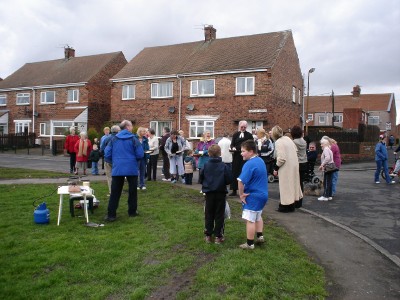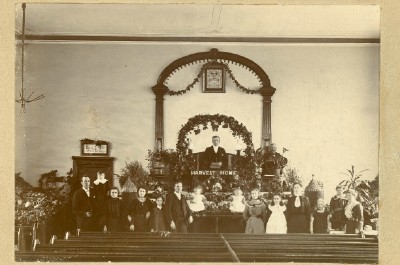Colliery Church's exterior has changed very little since it was built but inside has been recently renovated to a high standard through the generous support of both church and community, making the premises accessible to everyone, with the kind of facilities expected in the 21st century.
The church family has a deserved reputation as a welcoming church, and still retains a caring family atmosphere, which was so much a part of the old mining communities out of which the church grew.
The church has recently become part of the South East Northumberland Ecumenical Area (SENEA).
The church's life is naturally centred on its worship, which takes place every Sunday at 10.30 am
The Sunday Club (or Junior Church) is small, but we do encourage its participation in the life of the church.
.
We have a ministery with other neighbouring churches, Stakeford Methodist Church and Bedlington Trinity , Church of Christ, URC and Methodist) often joining for worship and Bedlington Churches Together.
Bedlington Colliery Methodist Church
About Us
Perhaps we cannot say that John Wesley did or did not visit Bedlington on one or more of his many visits through Northumberland, but we do know that he preached in the neighbouring colliery village of Plessey, just south of the river Blyth at Hartford.
We know that Wesley had a strong affection for the colliers there, and even established a preaching place in one of the cottages, so we can expect that his message of God's love and forgiveness would have been known throughout the area.
However, there was no chapel in Bedlington until Michael Longridge of Sunderland took over the ironworks in the 1890s, and built a chapel for his fellow Wesleyans in the Hollymount area of the town.
Methodism was growing and an approach was made to Lord Barrington to purchase a piece of land at the Sleekburn end of the Barrington Road, which was owned by the Morpeth and North Seaton Railways. The church was soon built and the opening was held on 8 December 1867.
However, the increased traffic on the railway and the road, as well as the inaccessibility of the building, led to the Society looking for a site for a new chapel, and a plot of land was found on Station Road.
When the Coal Company was asked for help towards the building, it offered to supply 80,000 bricks free of charge, if the Society would give the old chapel to be converted into two miners' cottages.
The new chapel, the ' Colliery' chapel, was built at a cost of £870. Colliery chapel was opened in 1884 and was described as "one of the neatest and best country chapels in the circuit." A new Sunday school was added in 1906.
Over the years, the Society has grown as neighbouring chapels closed and their members transferred to Colliery: Barrington closed in 1954, Red Row in 1962, and Clayton Street in 1964.
(The above the information was researched by Ian Bryson)

Our purpose is to respond to Godís love in Christ for everyone by being a focus for Christian teaching worship and care
Develop links with the commercial and social life of the Bedlington and to work in partnership with other churches.
Christian groups and with all that seek for the good of the town and the wider world
Have an open door offering a quiet welcoming space for reflection, meditation and prayer
Provide a meeting place as an integral part of the social and community life of the town offering good quality facilities for community activity for people of all ages.
To accomplish this we believe God is calling us to:
Be a church encouraging all to share in the excitement and challenge of the Christian journey
Be inclusive in character enabling everyone to have space to breathe and grow by providing a variety of worship styles and learning opportunities in the Christian life, which will equip for the 21st century
The chapel in about 1902
Notice the old gas lights.








